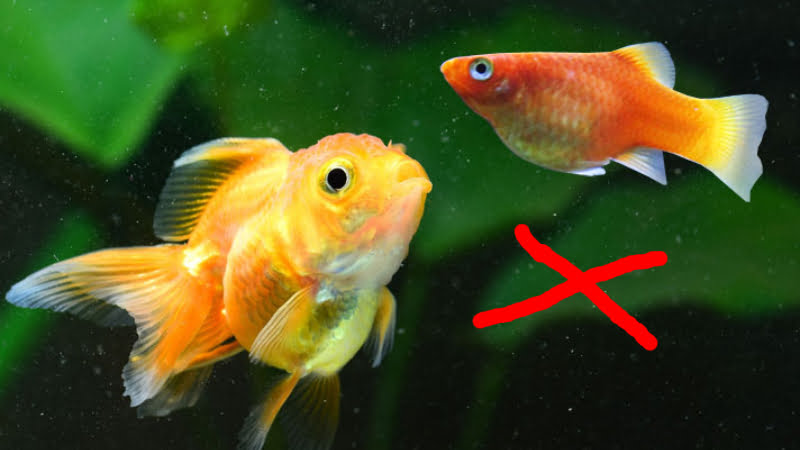Platies and goldfish may theoretically coexist, but doing so is not recommended for various reasons. They have specific requirements for the water temperature, the size of the tank, and the food they consume. In addition, they are unable to live comfortably because of their behavioral problems.
This is a common question asked by those interested in aquariums, and there are also different thoughts on the subject of whether or not goldfish and platy can live together. Some people think that if you set up an aquarium that meets all of their needs, they will be able to live together without fighting. However, experts advise against raising goldfish with platy since the downsides much outweigh the positives. Moreover, it is incredibly difficult to do so. As a result, we’re here to clarify the topic and give complete details.
See more
- Q&A: Can Axolotls Eat Goldfish? – Axolotls’ Best Tankmates
- Can Axolotls Live With Goldfish? Why It Is Not A Good Idea?
- Can You Keep Pleco And Goldfish Together?
- Keep Neon Tetra With Goldfish: 5 Reasons Why You Shouldn’t
- Bala Shark With Goldfish – 5 Important Criteria To Consider
4 Reasons Why Goldfish Shouldn’t Be Kept With Platy
According to what we’ve previously said, platy and goldfish should not be kept together in the same tank. They are two distinct species that need different living conditions. They are unable to accommodate one other’s requirements. Therefore, this will cause these two fish to feel unsettled in their comfort zone.
Below are the differences between platy and goldfish that we would like to describe in depth. Keep reading to understand why we advise you had better not raise them in the same tank.
Aquarium size
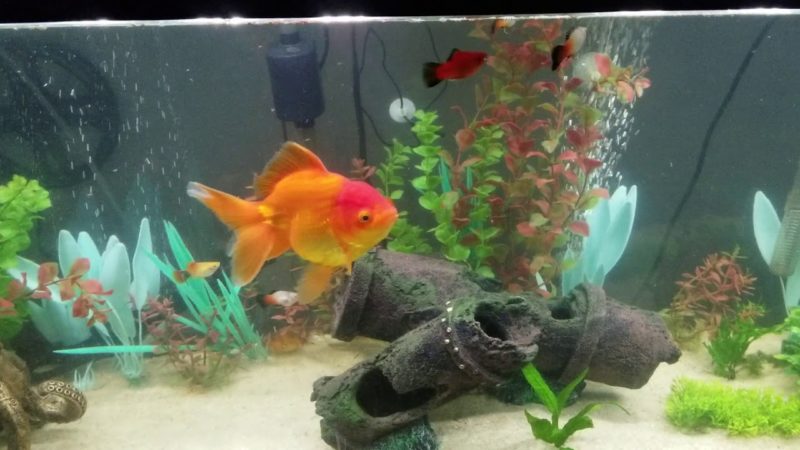
In fact, goldfish are far larger than platies in terms of size. They may grow up to 12 inches long, so you’ll need a big tank to keep them. In general, they need a tank that is at least 50 gallons in order to live peacefully, while certain species, like the shubunkin and the comet, need tanks that are as large as 75 gallons. Additionally, if you want to produce a significant number of goldfish, you are going to require an aquarium that is quite a bit larger than the average one.
Platies, on the other hand, are characterized by their tiny size. The average individual is just 2.5 inches in length. Because of this, they will perform quite well in tanks of any size, and we cannot say the same thing for goldfish.
Most people think it’s fine for goldfish to live in small spaces. However, we want to clarify that this is not even close to being true. By the time goldfish are adults, they have grown to be enormous, and keeping them in too-tiny aquariums is impossible. In addition to this, goldfish create a great deal more waste, and the water in a tiny aquarium may become toxic very fast if it is not changed out on a regular basis.
Water temperature
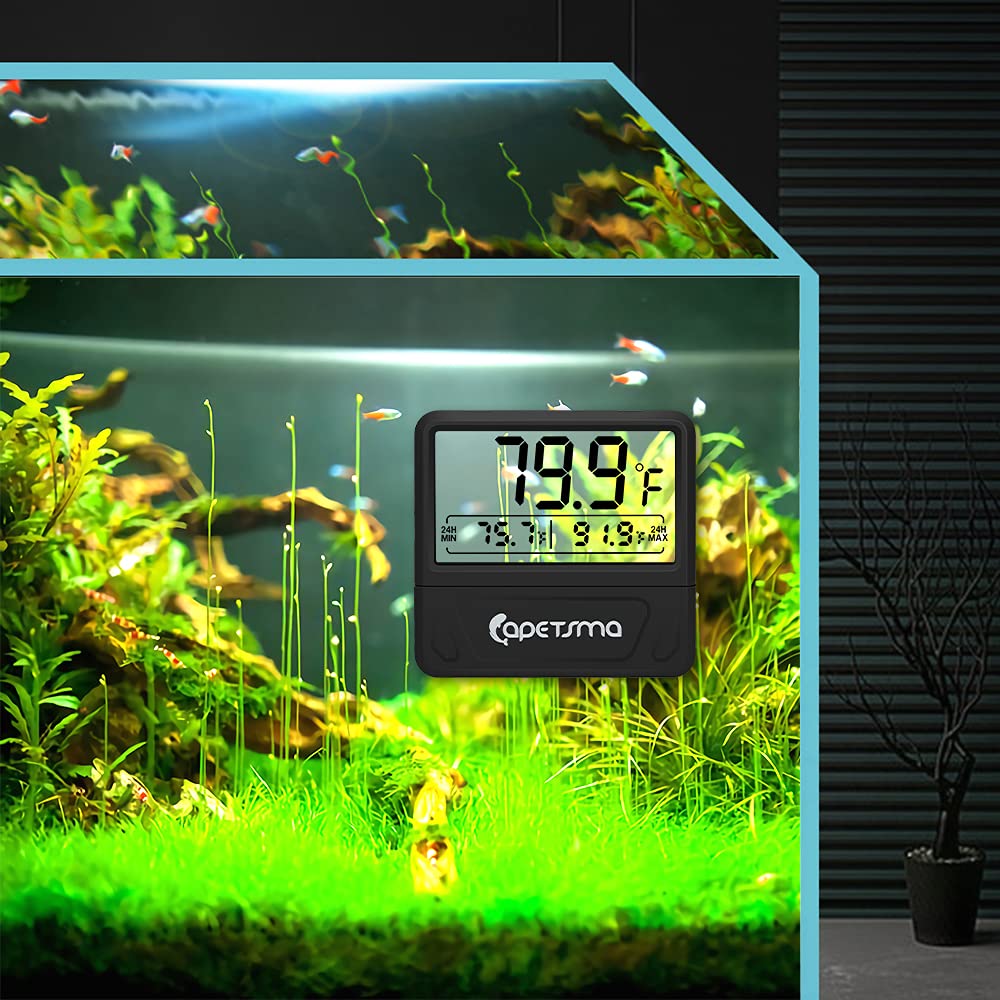
Both platy fish and goldfish live in freshwater but have different temperature requirements for their environment. Goldfish often perform well in water that is on the cooler side, with temperatures ranging from 60 to 74 degrees Fahrenheit. Hence, they do not need to install a heater in the aquarium.
In contrast, platies are tropical fish, so they like to live in warm waters. The ideal temperature range for platies is between 72 and 78 degrees Fahrenheit. And, unlike goldfish, they need a heater in the tank to be alive.
Regarding the water parameters, platy and goldfish are relatively comparable because they call for a pH range of about 7.0-8.4 and the water hardness level up to 12 dGH.
It is clear that they are native to entirely distinct bodies of water. Therefore, attempting to house them in the same aquarium definitely poses a significant threat to their health and can usually lead to fatal consequences.
Behavioral problems
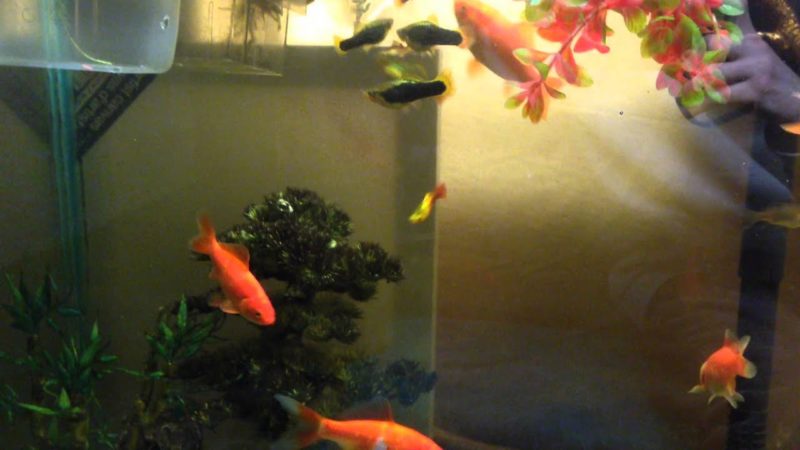
As was said before, it is possible that you may see aggressive behavior from both goldfish and platy fish. Because of their large size, goldfish will quickly become the dominant species in your aquarium. Because of this, please note that your platy fish could become a meal for the goldfish at any time. With that said, If you want your platy fry to have a chance of survival, you can’t breed your platys in the same tank as your goldfish. Or else, they will be eaten immediately upon the goldfish see them.
About the platies, in general, they are rather peaceful fish, and it is rare circumstances when they would cause any disturbance to the neighbor fish. However, we would like to call attention to the fact that they are really speedy fish, and the vast majority of the time, they will be the first ones to grab the food in the aquarium. This is something that we would like to emphasize. Therefore, if you aren’t paying attention, platies might deprive goldfish of their food, which would cause them to experience a serious deal of stress.
So, there is no doubt that these kinds of behaviors make platy fish and goldfish incompatible. Numerous instances of nipped fins and aggressive behavior such as pushing and pushing have been reported. As such, they can’t make good tankmates.
Maintenance
When compared to platies, goldfish are far more difficult to care for and maintain. Because of their enormous size, which we have already mentioned, the aquarium in which you keep them must be rather huge. In addition to this, they generate a significant amount of waste and have a rather high bioload.
If you don’t replace the water in your aquarium on a regular basis, harmful compounds like ammonia and nitrates may grow in the tank and harm the fish. And any sort of fish, even goldfish themselves, may die from these poisons.
In addition, if you have goldfish, it is highly recommended that you install a powerful water filter in their tank in order to avoid any of the problems listed above. Platies, on the other hand, are not as concerned about the filter and may be fine without it.
To sum up, goldfish pose a threat to your platies due to their high bioload, making them a danger to some harmful diseases. And this is another reason why you should not keep them together.
Choosing Tank Mates for Your Platy And Goldfish
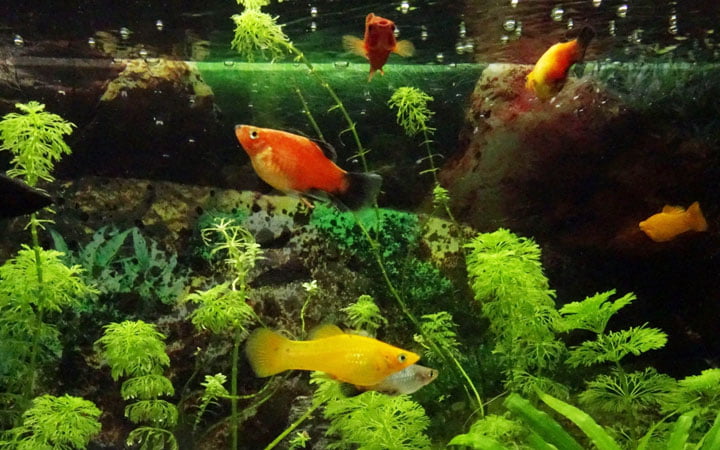
It is important to consider compatibility in the following aspects when selecting tank mates:
- Conditions of the water, including the size of the tank, the temperature of the water, the pH, and the hardness;
- Behavioral compatibility: Fin-nippers should not be maintained with long-finned fish; aggressive fish should not be kept with tranquil ones; little fish should not be housed with giant ones that may mistake them for food, etc.
- Specific dietary needs (it is preferable that fish consume the same kinds of food);
- Susceptibility to the disease and treatment options.
When determining whether or not to keep a group of fish together, there are a number of things to consider. If you take the time to do research, you won’t have to worry about dealing with difficulties such as injuries, nutritional concerns, health problems, and so on.
Fish that get on well with goldfish
When searching for suitable fish for goldfish, I suggest choosing any of these species: rubbernose plecos, zebra danios, bristlenose plecos, white cloud mountain minnows, rosy barbs, and tetras.
Your goldfish will live in a healthier, less stressful environment if you choose tank mates that are suitable for their needs. This will allow for all of the aquarium’s residents to live together in harmony.
Fish that get on well with platies
Platies are able to coexist peacefully with a wide variety of tropical freshwater fish, including endlers, guppies, minnows, neon tetras, swordtails, zebra danios, rose tetras, plecos, gouramis, mollies, corydoras, and more.
Platies, which are peaceful and energetic, should be housed alongside other fish with similar temperaments and water needs.
Video: Suitable Tank Mates For Platy And Goldfish
FAQs
What are the chances of goldfish eating platys?
There might seem strange that a livebearer would be recommended for a goldfish tank, but Platies are chunky enough not to be eaten by a goldfish. Additionally, they are placid and will not nip at your goldfish because they are not aggressive at all.
What is the reason that my platy is biting my goldfish?
Fish, just like other animals, are capable of aggressive behavior. They will compete with one another in the tank to see who is the best. The platy fish are the same as other fish in the aquarium in that they may display aggressive behavior against the other inhabitants of the tank. Your platy could all of a sudden start biting his tankmates or swimming after the other fish for no apparent cause at all.
What is the main difference between platy fish and goldfish?
Platies are a kind of tropical fish that thrive in warmer waters with temperatures between 72 and 78 degrees Fahrenheit (or perhaps a bit higher than this range). Goldfish, on the other hand, are fish that prefer more temperate waters. Goldfish are able to live in water with temperatures ranging from 60 to 74 degrees Fahrenheit, although they prefer cooler temperatures.
Conclusion
In spite of the fact that platy fish and goldfish do not like the same water conditions and should not be maintained together, there are a large number of different fish species you can choose to house with your platy fish or goldfish.
It is also important crural to research the needs of each fish and avoid any accidents in the aquarium by picking fish that have the same temperament.
I really hope that you have a better understanding of why you shouldn’t put goldfish in an aquarium with platyfish, and you could choose tank mates that are compatible with each other instead.

Annette M. Chaney is an experienced marine biologist with over 20 years of experience as an aquarist and fishkeeper. She started her first aquarium at a young age, filling it with frogs and goldfish obtained from the ten-cent pet store.
Annette grew up caring for and breeding African Cichlids, which led to a hobby in high school that doubled as a profitable means. Attending Reed College gave her time to solidify herself as an accomplished aquarium caretaker with an eye for sales. After that, from 2009 – 2013, she studied at Roger Williams University – one of the most prestigious universities for Aquaculture and Aquarium in USA. She is the founder of AquariumCircle since 2010.
